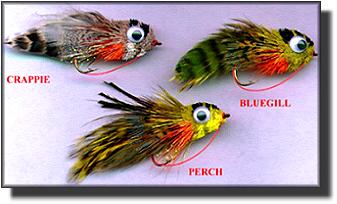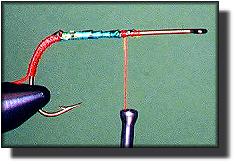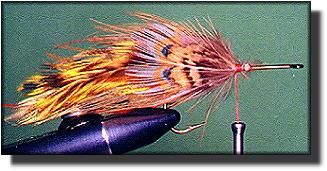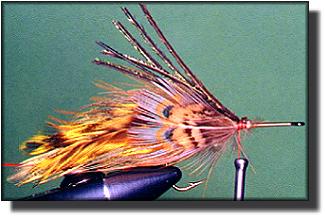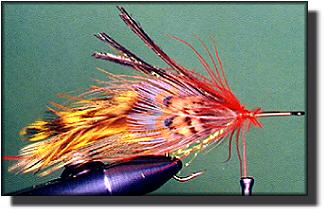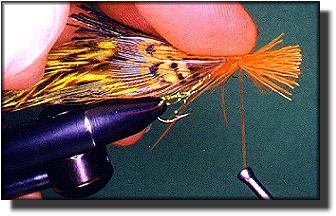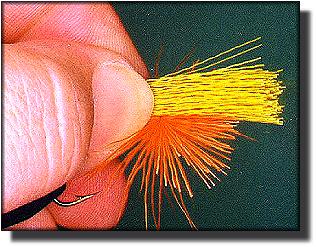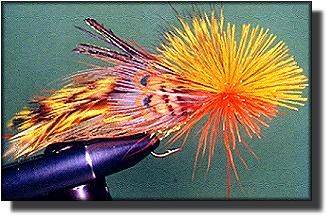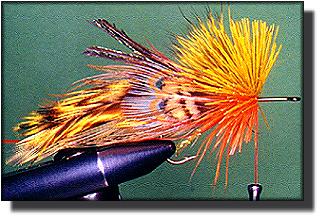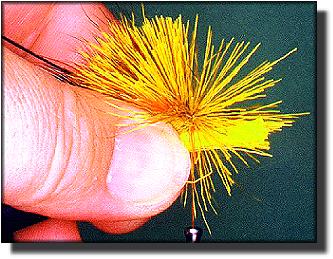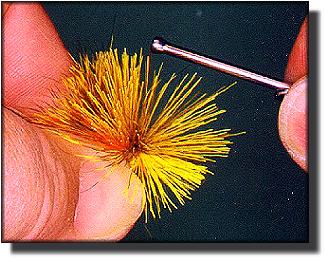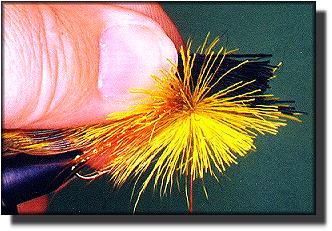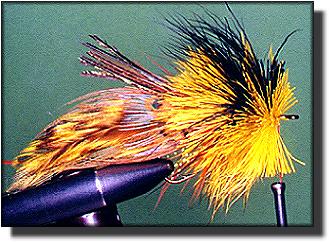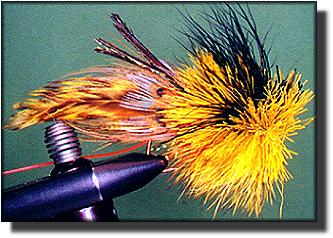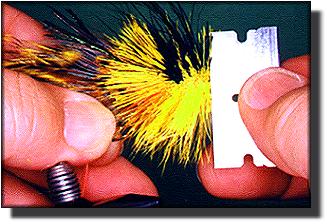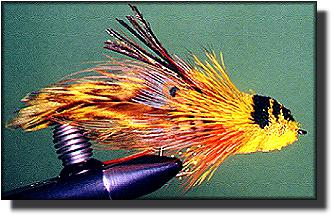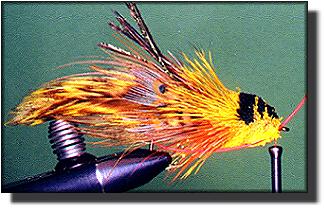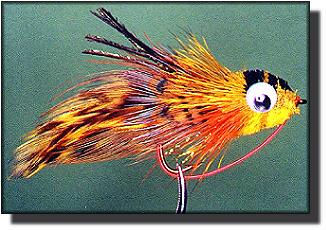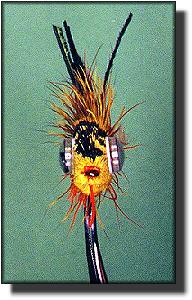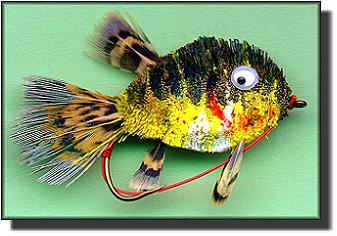How many times have you stood on the shore of a lake, watched the water
open up under a wounded panfish, and witnessed the feeding intensity of a
truly large bass or pike? Chances are it's happened many times if you
fish the right places often. That's nature's way of taking care of sick
and wounded water critters so they don't litter the shores of the
lakes.
If you spent any time at all watching dying panfish, you probably
noticed that they rarely swim upright like a healthy fish. Instead, they
usually wiggle along on their side. This is the dinner bell for any
hungry predator fish. Why spend any extra energy chasing down healthy
fish if there's an easy meal lying on its side in front of you?
Perch are common in South Dakota lakes. For any number of reasons, many
of them get sick or injured and die. Since many of those sick or injured
fish become dinner items for larger fish, it makes sense to tie a fly
that looks like a sick or injured perch. If bluegills, crappie or
sunfish are the predominant panfish in your local lake, this week's
pattern is easily adapted to those species as well.
The Shinebou Sunfish and shad patterns developed by Jimmy Nix were the
inspiration and guiding light for the deer hair perch pattern of this
week's lesson. Although this isn't an exact copy of his fly or the tying
steps he uses, the effect is so similar, the fish won't notice the
difference.
By the time you master this pattern, you'll be able to handle any of the
common hair techniques used in bass flies. And, you can adapt these
techniques to other flies. For instance, you could use these steps and
techniques to tie a crappie or bluegill. All you really need to do is
change the colors of the fly and keep the tying steps the same. Instead
of yellow grizzly hackle, use green for bluegill or a mix of mallard
breast feathers and plain grizzly hackle for the crappie. Change the
hair color to match the body. A simple adaptation is all that's
needed.
The fly is trimmed to lie on its side like a dying minnow would. If you
wiggle the rod tip to cause a twitching motion, it will look a lot like a
minnow that's about to expire. Any self-respecting bass or pike will
want to hurry that expiration process along. That's reason enough for me
to tie and fish this pattern.
By now you should be getting pretty good at spinning, stacking and
trimming deer hair. Personally, I'd love to spend another month showing
more flies that use shaped hair for the body and head, but since we've
already learned the techniques, that would be a waste of time and would
limit some of the rest of the techniques I'd like to pass on to you.
This fly takes advantage of all the deer hair stacking, spinning and
trimming techniques we've learned. It looks nice, will get compliments
from your friends, and it's as easy to tie as any of the deer hair flies
we've tied to this point. It just takes a little longer to tie. So,
trim this final deer hair pattern well. You'll need the practice as we
progress to new techniques.
|

